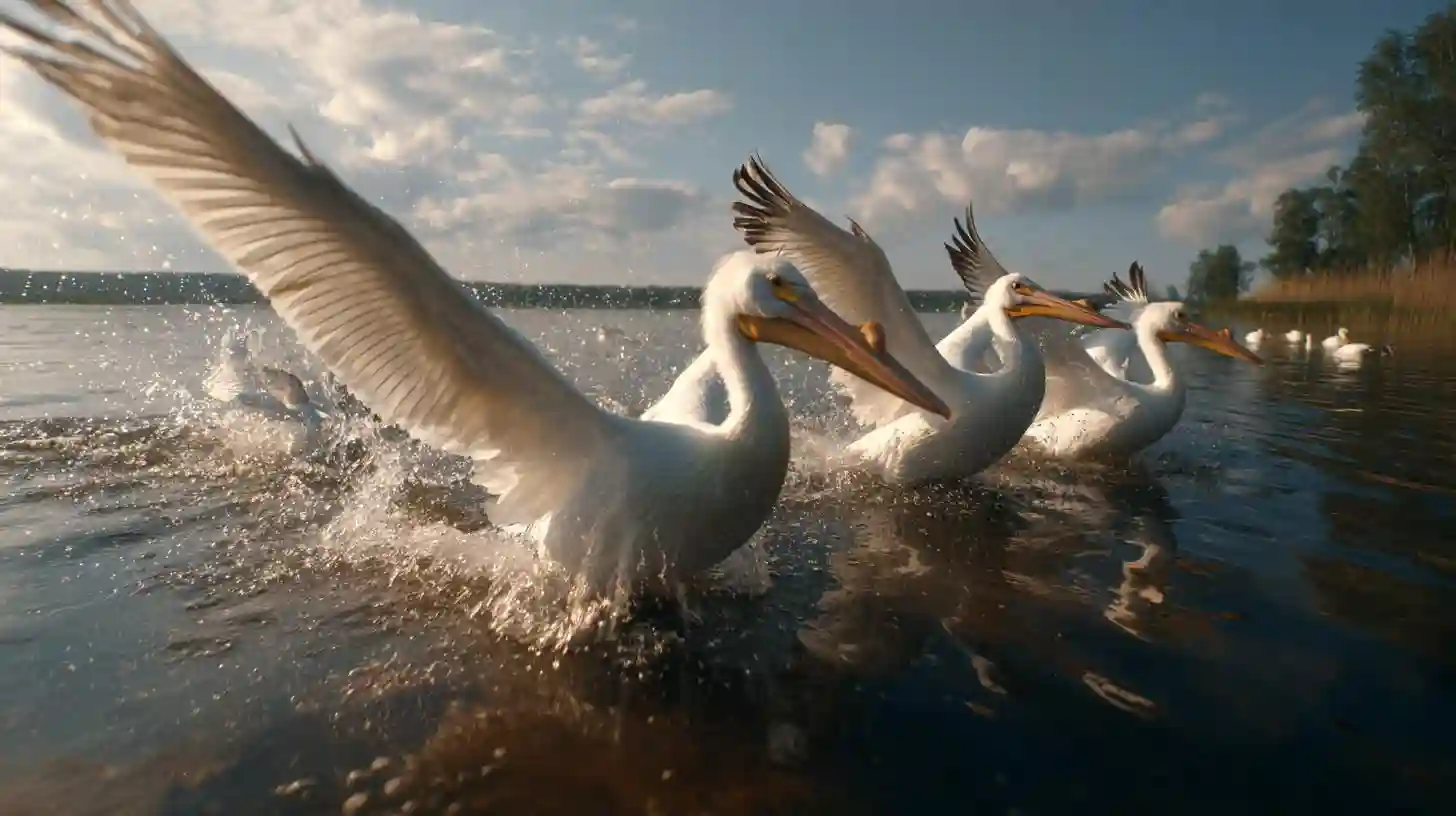
On the local lake the daily drama of the water’s edge features a familiar lineup of birds whose splashy theater never fails to draw the curious eye, and among the observers there is a consensus that the great blue heron, the mallard, the pied-billed grebe, the belted kingfisher, and the double-crested cormorant stand out for their distinctive styles, their bold presence, and the ways they reveal the health of the aquatic world that sustains them. The great blue heron towers above the reeds with a dusky slate body and a long, articulate neck that folds into a compact S as it hunts, stalking slowly along the shallows where fish hover in the shimmer of dawn and twilight, and when patience finally yields prey the strike is a swift, practiced lunge that sends a ripple across the surface and a spray of tiny droplets before the bird retreats with its catch, wingbeats measured and quiet until it lifts into the air with a lonely cry that travels over the water like a line drawn in the mist. The mallard brings a different kind of energy to the scene, a mosaic of color and motion that begins at the margin where females drift through the grasses and males, with iridescent green heads and copper-brown chests, lead a lolling parade of dabbling and foraging; they tilt and tip their bodies just beneath the surface to expose bits of vegetation and invertebrates, then rise with a flurry of wings and a chorus of quacks that punctuate the rhythm of the lake, a reminder that this body of water serves as both pantry and playground for a large, social community that thrives on the interplay of feeding, courting, and fledgling care. The pied-billed grebe adds a more secretive thread to the tapestry, a small, compact water bird with a rounded body and a stubby bill that is perfectly adapted to plunging through dense vegetation; observers learn to wait for the telltale bobbing head and the sudden flash of a dark back as it slips under the surface, paddling with strong, echoing strokes that propel it through murky water in search of tiny crustaceans and minnows, and though glimpses are often brief, the grebe’s micro-dives create a steady cadence that reminds marsh and shore that there is a hidden world beneath the glassy facade of the lake. Then there is the belted kingfisher, a bold shape perched on a snag or a snaggy branch, its slate blue plumage and conspicuous white collar outlining a hunter’s silhouette, and when the moment is right it darts straight downward with remarkable speed, breaking the surface with a crisp splash and surfacing with a gleaming fish held crosswise in its beak, the air splitting with its metallic call that creates a signature soundtrack for anyone who strolls along the water’s edge, a sound that marks successful pursuit and the confidence that comes from years of practice in an environment that rewards patience and precise judgment. Finally the double-crested cormorant arrives as a sleek, all-black silhouette that glides near the surface in long, unhurried strokes, slicing through schools of fish with astonishing efficiency, and after a successful dive the bird often rises to perch on a fallen log or rock, wings spread wide like a drying sail against the sun, a universal scene that embodies the cormorant’s adaptation to an aquatic life that requires extended underwater hunting followed by careful restraint and a seemingly quiet patience as the feathers shed water and the body rebalances for the next foray. Taken together, these birds paint a portrait of a lake that supports a complex food web, because each species occupies a unique niche: the heron rules the shallow margins with patience and a spectacular strike; the mallard creates a bustling surface ecosystem that circulates seeds and invertebrates as it moves about with its brood; the grebe probes beneath the surface, turning the watery world into a stage for rapid, precise underwater work; the kingfisher embodies aerial precision and bold predation from height, turning observation into a license to plunge when the fish reveal themselves; and the cormorant demonstrates power in motion beneath the waves, followed by a dramatic re-emergence to boast and dry its sleek plumage in plain sight. For scientists and seasoned birders alike, the behavior of these birds serves as a living indicator of water quality, prey availability, and the balance between plant life, algae, and fish, because shifts in seasonal rainfall, shoreline erosion, or fish populations can alter the ways these birds forage, defend territories, and raise their young, and even casual observers can notice the difference in splash patterns, timing, and flock dynamics when a lake shifts from quiet abundance to stressed scarcity. In practice, watching these birds on a calm morning or after a late rain brings a sense of connection to an ecosystem that is at once ancient and intimate, where the lake’s surface becomes a mirror for the sky and a canvas for the day’s feeding drama, and where each splash, flutter, and dive is a reminder that local wetlands require attentive stewardship so that the stories these species tell continue to unfold for generations of visitors who pause to listen to the water and to observe how resilient and interwoven life can be along its edge. As light shifts and the lake settles into a cooler lull across the afternoon, the silhouettes drift into quieter corners, but the memory of the splash persists, inviting ongoing curiosity about how such birds survive, thrive, and teach future watchers the language of water.